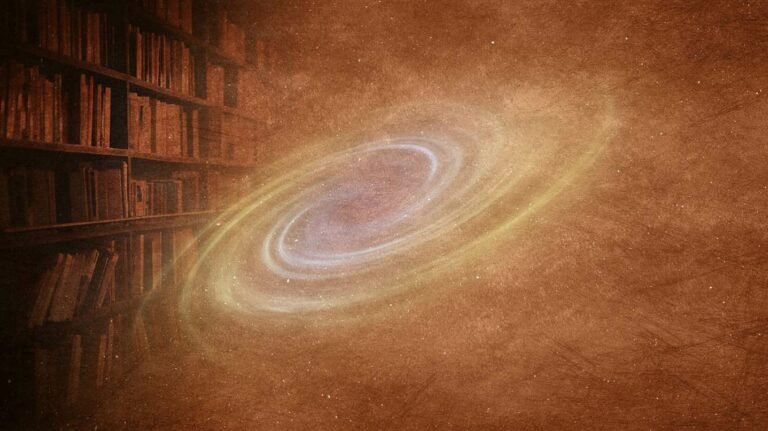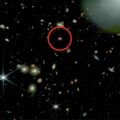The chemistry of terrestrial life requires heavy elements like carbon and oxygen, which are produced in stellar interiors. The hot and dense phase of the early universe did not produce a significant abundance of elements heavier than hydrogen and helium because the synthesis of elements lasted only a few minutes before the Universe cooled off to temperatures below the fusion activation threshold.
Astronomers label elements heavier than hydrogen and helium as metals. These were cooked in stars, which started to form a hundred million years after the Big Bang, as revealed by the recent deep images from the Webb telescope. Life as we know it was not possible before the first hundred million years.
The abundance of metals increased over cosmic time. The Sun is a late bloomer, given that most stars formed billions of years earlier. The material that made the Sun was already enriched by previous generations of stars, with metals making two percent of the mass budget. After consuming their nuclear fuel, earlier stars with at least eight times the mass of the Sun explode as supernovae and spew their guts, enriching the surrounding interstellar medium with metals.
This raises an interesting thought experiment. Consider a huge closed box containing gas, in which stars form and enrich the remaining interstellar gas with metals. Would the remaining gas reservoir eventually be made mostly of metals so that the last generation of “metallic stars” would have an asymptotic mass fraction of metals that is fifty times larger than that of the Sun?
As it turns out, this thought experiment is realized in the universe. At the center of every galaxy lies a massive black hole, which shines brightly as a quasar when fed with gas. In the vicinity of the black hole, the gravitational potential well is so deep that the escape speed from a region that is thousands of times bigger than the black hole horizon is above the characteristic speed of supernova ejecta. As a result, the black hole gravity can confine the ejected heavy elements to that region, like a trampoline trapping a bowling ball circling at low enough speed around its center. The most massive stars have a short lifetime of merely a few million years, allowing many generations of increasing metallicity during the typical age of galactic nuclei. In addition, the orbital time is of order years, allowing efficient mixing of the supernova ejecta within the region. As a result, galactic nuclei could maintain the heavy elements produced by supernovae and behave as a closed box during the lifetime of many generations of massive stars. If fresh gas of low metallicity does not flow in, then this environment resembles our thought experiment. Quasar jets could drive outflows from the box but would not change the metallicity limit of the remaining gas.
Observations of emission lines from gas clouds in the inner region of quasars (the so-called broad-line region, a few thousand times the horizon scale of the black hole), indicate that the metallicity ceiling there is universally ten times and not fifty times the solar value. This ceiling appears to be the same in all quasars, independent of star formation rate, cosmic time, or black hole mass. Why is this metallicity ceiling universally five times below the maximum possible value?
In a new paper with my student, Shelley Cheng, we showed that once the metallicity reaches a value of ten times the solar abundance, massive stars lose so much mass through winds that they cannot evolve to explode in supernovae. The winds are often powered by radiation pressure, which is more effective at driving mass loss as the opacity of the gas rises with increasing metallicity. Above ten times the solar abundance, metals remain locked in stellar interiors, and the interstellar gas is not enriched further.
Nevertheless, the interstellar medium in galactic nuclei is enriched with more seeds for the chemistry of life than the solar system inherited. However, the higher abundance of carbon or oxygen is not necessarily a fertile ground for life. As I showed in a paper with my former postdoctoral fellow, John Forbes, the Ultraviolet and X-ray radiation emanating from the black hole can easily eliminate all life forms and sterilize the surfaces of planets within a few thousand light years from a bright quasar.
We are fortunate to be located on Earth in the periphery of our host galaxy, twenty-four thousand light years away from the central black hole, Sgr A*. As a result, the X-ray flux from Sgr A* never exceeded that from the Sun.
However, supermassive black like Sgr A* spend most of the time unfed and dormant. if intelligent life does emerge during this common phase of a supermassive black hole, it can benefit from several perks, including:
- Use the black hole as a source of clean energy by dumping trash through the accretion disk of matter that swirls around it. Up to 42 percent of the rest mass of this trash can be converted to radiation at the innermost stable circular orbit of a maximally spinning black hole.
- Couple some engineered devices to harness the energy associated with the spin of the black hole as if it was a giant flywheel.
- Surf with light sails on quasar jets at speeds approaching the speed of light.
- Prolong youth in beauty salons near the horizon of the black hole, where time is ticking more slowly as a result of gravitational redshift.
- View the spectacle of the entire universe through the gravitational bending of light rays near the black hole.
- Establish an amusement park at the so-called “photon sphere,” where one could enjoy relativistic effects for fun, such as seeing one’s back by looking straight ahead – as light circles around the black hole.
- Take advantage of new opportunities for space travel. For example, when the Milky Way and its sister galaxy Andromeda will merge billions of years from now, the two black holes at their centers will come together and form a tight binary, which should act as a gravitational slingshot and eject stars or planets at up to the speed of light. This process was described in two papers that I wrote with my former postdoctoral fellow, James Guillochon (linked here and here). Travel agencies may offer related tickets to exceptional rides on planets that traverse the entire universe over billions of years.
- Send criminals into the black hole as the ultimate prison with a death sentence at the singularity. The mass of the black hole will determine how much time is left for the prisoners to live. The lesser their crime, the more massive the black hole would be, extending their remaining life span after crossing the “prison walls” associated with the black hole horizon. The biggest penalty will be associated with a stellar-mass black hole.
- Use gravitational waves from small objects orbiting the black hole for communication. Such signals cannot be blocked by any known form of matter.
- Test fundamental aspects of quantum gravity through organized trips for string physics experimentalists towards the singularity.
Since metals seed life, galactic nuclei may offer these benefits if the seeds can ever blossom and become sentient civilizations. In that case, the celebratory fireworks of these civilizations might explain why some galactic nuclei are so active.
Avi Loeb is the head of the Galileo Project, founding director of Harvard University’s – Black Hole Initiative, director of the Institute for Theory and Computation at the Harvard-Smithsonian Center for Astrophysics, and the former chair of the astronomy department at Harvard University (2011-2020). He chairs the advisory board for the Breakthrough Starshot project, and is a former member of the President’s Council of Advisors onScience and Technology and a former chair of the Board on Physics and Astronomy of the National Academies. He is the bestselling author of “Extraterrestrial: The First Sign of Intelligent Life Beyond Earth” and a co-author of the textbook “Life in the Cosmos”, both published in 2021.

